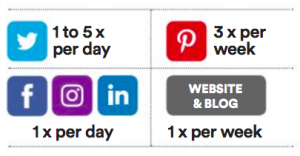Get social! Savvy convenience retailers create vibrant online communities
We’ve seen remarkable change in our lifetimes, but what we’re experiencing now is different. It’s not just evolutionary change; it’s transformative change that requires us to alter our patterns of behaviour and learn new skills. Just having a nice store with nice products and services in a good location isn't enough anymore.
Consumers are seeking modern conveniences such as mobile apps that can connect them directly with their stores, and you must be willing and able to meet those needs. Although specific apps may not be feasible for certain c-stores, the likelihood that your customers are already using social media is high.
With social media establishing itself as a viable online marketing opportunity, how can you use technology to promote your store and its products and services?
It’s time to get social
The most important point about social media is that it’s a marketing channel not a standalone marketing strategy. Your online marketing objectives should include aiming to grow your business, convert shoppers, educate your shoppers and/or engage your shoppers with a social media plan that offers visibility and connection as well as convenience. The result can be time and money-related savings of your scarce resources for marketing, as well as increased customer loyalty.
Social media allows you to connect with your loyal customers on another, deeper level. Are you considering using or enhancing your social media to promote your business in 2019?
Find your audience
This phrase is used a lot when discussing social media marketing. And it sounds intuitive, right? You must find the people who will want your offerings and target efforts towards them. But putting this phrase into practice can be a bit daunting. You might be asking yourself: Where is my audience? How do I find them?
The first step to answering this question is simple. You must understand the environment of each social media platform. Not only does the type of communication available on each platform differ, but the expectations for communication differ as well. It’s hard to keep up with the many types of social media. So, let’s break this down and look at the social mechanics of each site in this infographic that uses donuts to explain the differences.
Schedule content as you discover it
Creating an effective social media plan can be overwhelming and time-consuming, but by staying organized and planning as much in advance as possible, you can manage all your social media in one place by using a dashboard service for posting.
BothHootsuiteand Bufferoffer free or paid options. On a free version they each allow up to three social sites to post to, and on a paid basis there are plans to suit your needs. If you’re early stage the best strategy to begin is to use both as a free service; that way you’ve got six sites you can post to.
Then measure the impact of your social media campaigns through comprehensive reporting. Both dashboard services come with robust analytics to help you get the most from your activity. It’s easy to set up, but maintenance can be complicated, so your store should be running well before getting involved in social media because it needs to be consistent and maintained to be effective.
Social media for business
A large portion of social media activity should be generated by the c-store itself and should relate to non-promotional content, such as photos from community events and other activities. About 10% of the content should be generated elsewhere, such as retail news from other sources, and another 10% of content should relate to promotions occurring at your store.
Don't forget, social media must have that personal touch. It’s what makes your c-store your c-store.
Recommended posting frequency for the most popular social media sites for business:

Experience accumulates
Don’t get overwhelmed with all the options you hear about. Pick two or three to get started; dip your toe in the water, and wade into the pool from the shallow end first.
Above all…don’t just set it and forget it. Make sure to engage and have conversations with your online community. These conversations just might lead to customers making a visit to your store to engage with you instead of patronizing another retailer.

Gerry Spitzner is a business management consultant with an optimistic approach to improving life and business results. Fascinated with why customers buy, trends and a passion for retail, he is dedicated to sharing his thinking with business development strategies to create, engage and keep great customers. For more on his approach, contact him at [email protected].
